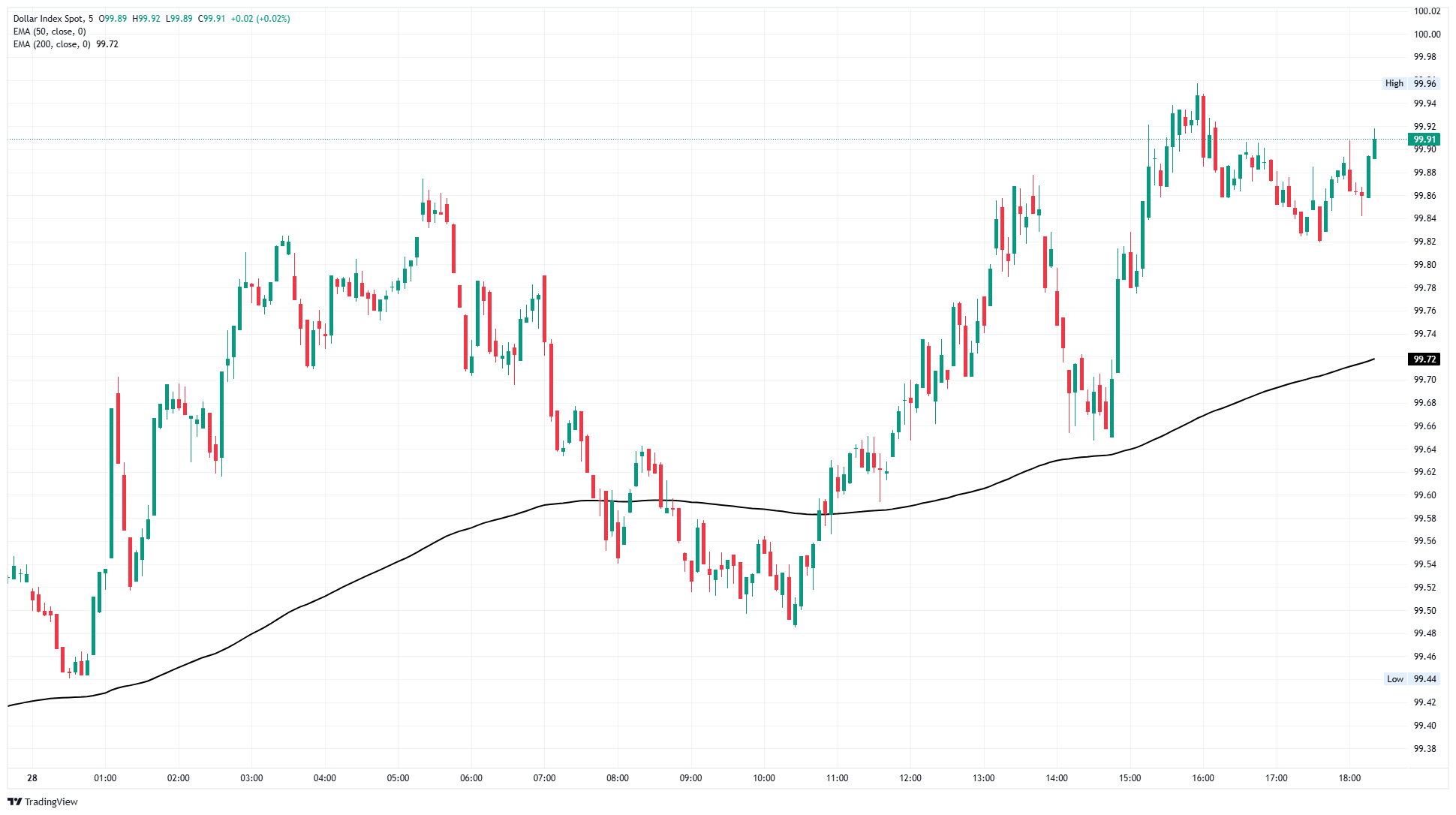US Dollar Index jitters as Fed Meeting Minutes reveal increasingly-cautious Fed
- The Fed remains cautious amid ongoing structural changes.
- Fed officials are refraining from picking a policy approach as tariffs threaten the economy.
- Economic activity forecasts for 2025-26 from FOMC staff are generally lower than those made in March.
The latest Meeting Minutes from the Federal Reserve's (Fed) Federal Open Market Committee (FOMC) rate meeting on May 6-7 indicate a historically rooted wait-and-see approach. At this meeting, policymakers observed that the US Dollar's (USD) status as a safe haven has recently diminished. They warned that a more "durable shift" in the Dollar's position could significantly affect the US economy.
Almost all FOMC members agreed during the May meeting that inflation risks might be more "persistent than anticipated." With Fed staff pointing to tariff effects as a major factor influencing the FOMC's downbeat outlook on the US economy, they have blamed the declining economic conditions and unclear outlook for inflation and growth on the Trump administration's shifting tariff policies.
More to come...
Market reaction
The US Dollar Index (DXY) took a slight hit before rebounding on intraday charts, with the Greenback refusing to stay below 99.90. Intraday price action is tilted into the high side, and DXY bulls are determined to keep the US Dollar keel-side-down through the midweek market session.
DXY 5-minute chart

Fed FAQs
Monetary policy in the US is shaped by the Federal Reserve (Fed). The Fed has two mandates: to achieve price stability and foster full employment. Its primary tool to achieve these goals is by adjusting interest rates. When prices are rising too quickly and inflation is above the Fed’s 2% target, it raises interest rates, increasing borrowing costs throughout the economy. This results in a stronger US Dollar (USD) as it makes the US a more attractive place for international investors to park their money. When inflation falls below 2% or the Unemployment Rate is too high, the Fed may lower interest rates to encourage borrowing, which weighs on the Greenback.
The Federal Reserve (Fed) holds eight policy meetings a year, where the Federal Open Market Committee (FOMC) assesses economic conditions and makes monetary policy decisions. The FOMC is attended by twelve Fed officials – the seven members of the Board of Governors, the president of the Federal Reserve Bank of New York, and four of the remaining eleven regional Reserve Bank presidents, who serve one-year terms on a rotating basis.
In extreme situations, the Federal Reserve may resort to a policy named Quantitative Easing (QE). QE is the process by which the Fed substantially increases the flow of credit in a stuck financial system. It is a non-standard policy measure used during crises or when inflation is extremely low. It was the Fed’s weapon of choice during the Great Financial Crisis in 2008. It involves the Fed printing more Dollars and using them to buy high grade bonds from financial institutions. QE usually weakens the US Dollar.
Quantitative tightening (QT) is the reverse process of QE, whereby the Federal Reserve stops buying bonds from financial institutions and does not reinvest the principal from the bonds it holds maturing, to purchase new bonds. It is usually positive for the value of the US Dollar.